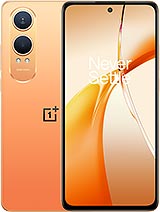Lava Blaze Duo alternatives
Tap above to see alternatives.
Poco X7 alternatives
Tap above to see alternatives.
2x2.5 GHz Cortex-A78
6x2.0 GHz Cortex-A55
4x2.5 GHz Cortex-A78
4x2.0 GHz Cortex-A55
8GB 128GB (UFS 3.1)
8GB 256GB (UFS 2.2)
(wide), PDAF
2MP
f/1.5, 26mm (wide), 1/1.95", 0.8µm, PDAF, OIS
8 MP
f/2.2, 15mm, 120˚ (ultrawide), 1/4.0", 1.12µm
2 MP
f/2.4, (macro)
1080p@30/60/120fps
f/2.0, (wide), 1.0µm
f/2.2, 25mm (wide), 1/4.0", 0.7µm
SIM1: Nano, SIM2: Nano
SIM1: Nano, SIM2: Nano
13 5G bands
n1, n3, n5, n7, n8, n20, n28, n38, n40, n41, n66, n77, n78
14 5G bands
n1, n2, n3, n5, n7, n8, n20, n28, n38, n40, n41, n48, n77, n78
In this performance comparison, the Poco X7 with its Mediatek Dimensity 7300 Ultra (4nm) performs better than the Lava Blaze Duo with the Mediatek Dimensity 7025 (6nm), thanks to superior chipset efficiency.
Poco X7 launched with Android 14 and will receive updates until Android 17, whereas Lava Blaze Duo launched with Android 14 and will get Android 15. Poco X7 will get security updates until 2029 (approx. 4 years), while Lava Blaze Duo is supported till 2026.
Both Lava Blaze Duo and Poco X7 feature AMOLED displays, offering vibrant colors and deeper blacks. Both smartphones offer the same 120 Hz refresh rate. Both devices deliver the same brightness level at nits. Notably, Poco X7 offers a higher screen resolution, resulting in sharper visuals and more detailed content.
Poco X7 features a larger 5500 mAh battery, potentially delivering better battery life. Poco X7 also supports faster wired charging at 45W, compared to 33W on Lava Blaze Duo.
Poco X7 offers better protection against water and dust with an IP69 rating.
¹ Scores can vary even with the same chipset due to RAM, thermals, and software optimization.











